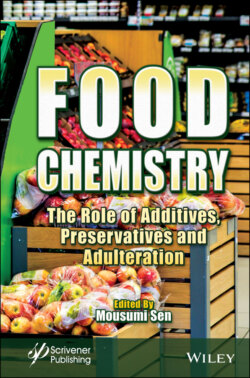Читать книгу Food Chemistry - Группа авторов - Страница 92
2.3.6.15 Seasoning
ОглавлениеThey are the additives from plant origin. They are added in food and drinks to improve the taste and aromatic fragrance. They are obtained from different parts of the plant like root, leaves, flower, bud, fruits, seeds, and whole plants. A list of some common spices along with their bioactive compounds are presented in Table 2.6. They also add phytonutrients, essential oil, antioxidants, vitamin, and minerals to the food where it is applied [20].
Table 2.6 List of some common spices and their bioactive compounds [21].
| Spice | Bioactive compound | Benefits |
|---|---|---|
| Black pepper | Piperine, piperidines, and pyrrolidines | When applied in meat products, it decreases lipid peroxidation. |
| Paprika | Capsaicin | It reduces inflammation and stimulate digestion. |
| Turmeric | Curcumin, curcuminoid | It reduces join pain and stomach pain. |
| Ginger | Gingerol, shogaols, paradols | It has anti-blood clotting activity, stimulates digestion, and reduces bacterial and fungal infection. |
| Cardamom | Eucalyptol, limonene, cineole, and α-terpinyl acetates | It has anti-microbial properties and can improve cardiovascular health. |
| Vanilla | Vanillin | It has antioxidant and antimicrobial property. |
| Black cumin | Thymoquinone, dithymoquinone, and thymohydroquinone | It has anti-microbial properties. |
| Clove | Eugenol | It has antioxidant and antimicrobial property. |
| Cinnamon | Trans-cinnamaldehyde, eugenol, and linalool | It has antioxidant and antimicrobial property. |
